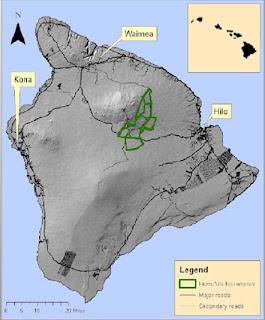This morning, the House Committee on Hawaiian Affairs held an informational briefing on the Department of Hawaiian Home Lands (DHHL) "'Aina Mauna Legacy Program." The mission of the program is to protect over 56,000 acres of native Hawaiian forest that is ecologically, culturally, and economically self-sustaining for the DHHL beneficiaries and the community. The project is considered a legacy project because it will take several generations to come to fruition.
 |
| Picture courtesy of the Department of Hawaiian Home Lands |
The 'Aina Mauna Legacy Program is part of the DHHL's Ho'omalu Energy Program which aims to:
Malama 'aina: Respect and protect our native home lands
Ko'o: Facilitate the use of diverse renewable energy resources
Kukulu pono: Design and build homes and communities that are energy efficient, self-sufficient, and sustainable
Kokua no i na kahu: Provide energy efficiency, self-sufficiency, and sustainability opportunities to existing homesteaders and their communities
Ho'ona'auao: Prepare and equip beneficiaries to promote a green, energy efficient lifestyle in and around communities
The 'Aina Mauna Legacy Program is supported by Kamehameha Schools, Queen Lili'uokalani Trust, Queen Emma Land Company, Office of Hawaiian Affairs, Royal Order of Kamehameha I, Kahea Hawaiian-Environmental Alliance, Kuakini Hawaiian Civic Club of Kona, Hawai'i Island Economic Development Board, Hawai'i Island Chamber of Commerce, Hawai'i Forest Industry Association, The Nature Conservancy, Hawai'i Audubon Society, Concervation Council for Hawai'i The Trust for Public Lands, Big Island Invasive Species Committee, University of Hawai'i, U.S. Fish and Wildlife Service, and the U.S. Army.
For more information on the project, click here.

No comments:
Post a Comment